Article by Lucia Longhi // May 24, 2019
“May you live in interesting times”: the title-curse thrown on Venice for this 58th Biennale seemed to have really come true during the opening week, when violent and atypical rains menaced the island, submerging it under a great flood. While the allegory of the interesting times seemed to materialize, Ralph Rugoff’s exhibition presented itself to the public as a sort of modern Noah’s Ark. At the Central Pavilion in the Giardini and at the Arsenale—where ships were once constructed—the curator has built a modern ark ready to symbolically save every species, every type of art of our time.
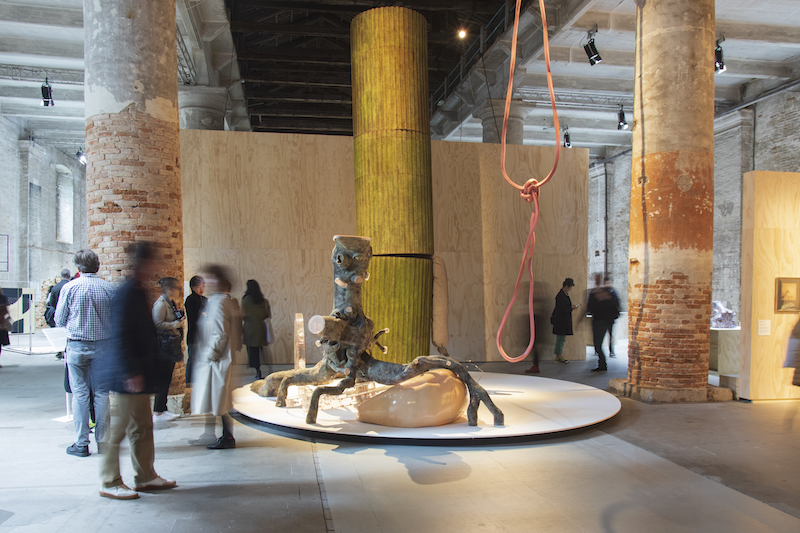
Handiwirman Saputra: Various works, 2011-2019, installation view at 58th International Art Exhibition – La Biennale di Venezia, ‘May You Live In Interesting Times’ // Photo by Italo Rondinella, courtesy of La Biennale di Venezia
This seems to be the main (and positive) feature of the exhibition. If the purpose is to give a cross-section of the international artistic research of our age, then the curator succeeded, offering a selection of artists who see the function of art as “a mix of both pleasure and critical thinking”, involving a manifold group of media and topics.
Two aspects stand as immediately striking and make this exhibition a mirror of contemporary art. The first is the reduced selection of the participating artists in this year’s presentation, from the hundreds of artists showing on previous years, to only 79 this year. In a historical period in which the overabundance of images and possibilities of representation seem to saturate our brains to the point of compromising crucial skills, like critical judgment, the ability to choose and discern is fundamental. Moreover, when this is applied to such a colossal context as the Biennale, where the temptation to over-do is strong (given the enormous spaces and the possibility of drawing from basically anywhere in the world), selection becomes an important value. It is a virtue and a sign of intelligence and courage. Having thus renounced the temptation of “all in”, Ralph Rugoff carefully selected a limited number of artists instead. Additionally, the same artists are exhibited both in the Central Pavilion and in the Arsenale. This is a choice that expresses a strong conviction, as if to say: the artists do not only deserve a place in the Biennale, but two.
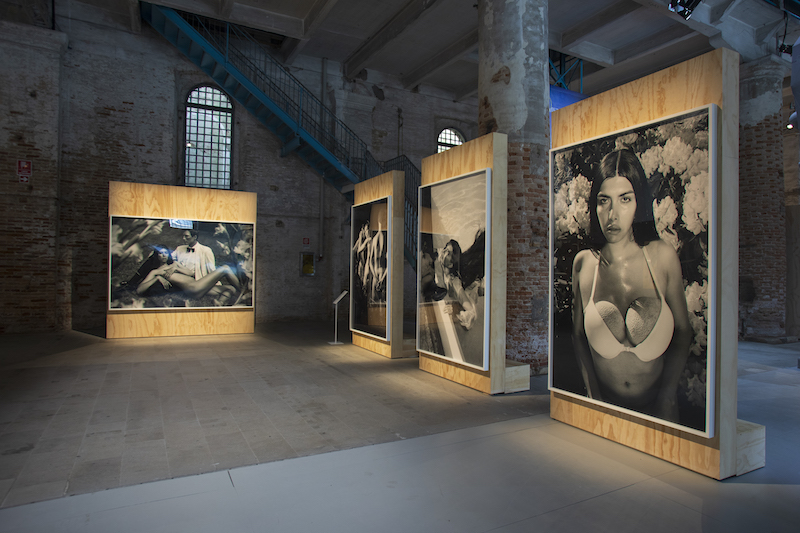
Martine Gutierrez:
‘Body En Thrall from Indigenous Woman’, 2018, installation view at 58th International Art Exhibition – La Biennale di Venezia, ‘May You Live In Interesting Times’ // Photo by Italo Rondinella, courtesy of La Biennale di Venezia
Courage, determination and trust in the younger generation is integral to this project. From the most renowned ones, like Neil Beloufa and Haris Epaminonda, who wonderfully present their peculiar practices to the international public, to new faces, like the eclectic Martine Gutierrez, who faces modern social constructs with a provoking and elegant performance-photography in which she embodies contemporary clichés amid mannequins. Or, again, Augustas Serapinas, who spreads observatory structures throughout the exhibition in order to offer “alternative points of view”. This, too, is a sign of faith in our interesting—although still propitious—times, which are giving birth to refined and responsive minds. They know how to entertain, have fun, subvert the dominant order (or, to quote the curator “discern the ways in which ‘order’ has become the simultaneous presence of diverse orders”) and, above all, interpret the urgencies of this world using the tools currently available.
Here, we come to the core of the exhibition, which, both formally and conceptually, is dense and complete: a contemporary encyclopedia. There is indeed a lot of space for painting, from nationally-inspired figurative works (Njideka Akunyili Crosby and Michael Armitage, for example) to large-size, abstract or metaphysical paintings (Jill Mulleady, Julie Mehretu and Ad Minoliti).
There is space for mighty sculptures, elegantly presented at the Arsenale in the ‘Proposition A’ part of the exhibition (‘Proposition B’ is at the Giardini) with no exaggeration or overstatement: Handiwirman Saputra’s ‘No Roots, No Shoots’, for instance, is a monumental yet poetic homage to the ordinary, the familiar. It’s an invitation to reflect on the difference between seeing and looking.
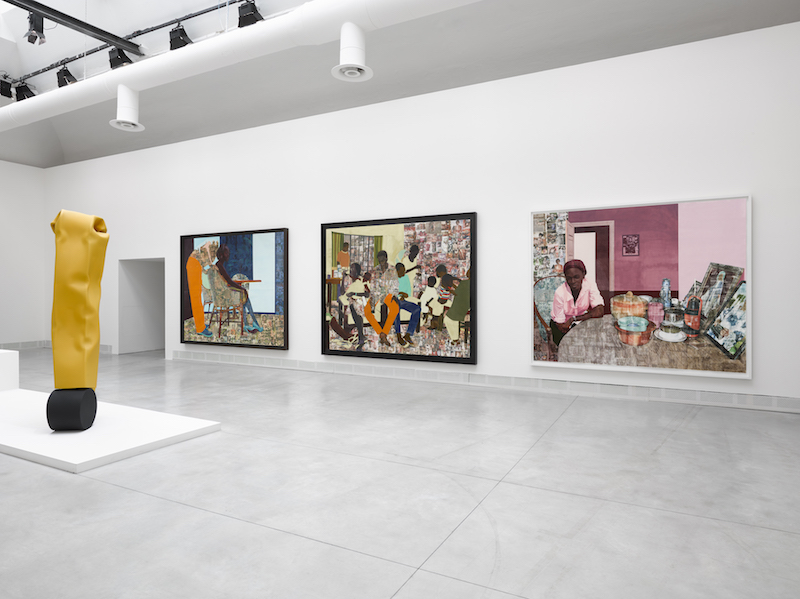
Njideka Akunyili Crosby: Various works, 2013-2019, installation view at 58th International Art Exhibition – La Biennale di Venezia, ‘May You Live In Interesting Times’ // Photo by Italo Rondinella, courtesy of the artist, Victoria Miro, and David Zwirner
Finally, there is space for new media and the digital arts: the codes of our time that the curator seems to recognize as such. Virtual Reality, robots, internet art, interactive installations, sound art and computer-generated films integrate seamlessly with the show. A delicate sound work by Lawrence Abu Hamdan focuses on the political effect of sounds and deals with the human voice, often taken over by governments and data companies.
The videos by Ed Atkins especially resonate with the spirit of the exhibition. Putting his renewed avatars to work, reflecting on the inconsolable darkness of humans, next to old costumes from the Deutsche Oper, Atkins opens a fluid, dramatic dialogue between any realm, any era, any human subconscious using digital tools. Computer-generated images are the universal language used by Ryoji Ikeda and Jon Rafman, too, throwing the public—although in two completely different ways—into a parallel, and frighteningly plausible, digital universe.
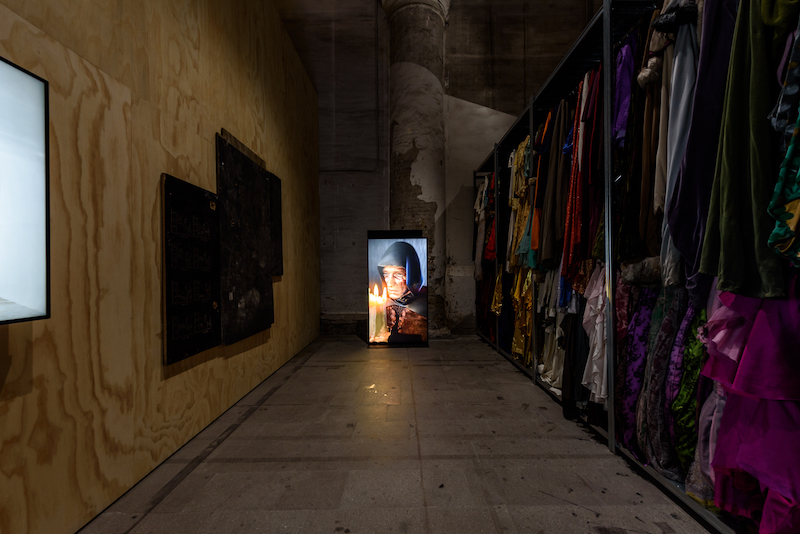
Ed Atkins: ‘Old Food’, 2017-19, installation view at 58th International Art Exhibition – La Biennale di Venezia, ‘May You Live In Interesting Times’ // Photo by Andrea Avezzù, courtesy of La Biennale di Venezia
The presence of big robots, perhaps the real stars of this show, is much appreciated. The desperate movements of Sun Yuan and Peng Yu’s anthropomorphic machines are highly dramatic: with mesmerizing human grace, ‘Can’t Help Myself’ seems to communicate the elusiveness, the ungraspable of such things like art itself, while futilely trying to contain an unstoppable puddle of blood. At the Arsenale, the Beijing-based duo displays ‘Dear’, a white silicon chair with a rubber hose that violently whips around the space, the result of highly pressurized air. Seeing these robots behind plexiglas barriers suggests the idea of new, exotic animals in a zoo.
Finally! Robots are present at the Biennale. The large audience at the opening, intrigued and pleased, acclaims and welcomes them. At this point a question arises: robots have figured in art for at least 15 years. Why only now have they managed to earn a place in the art Olympics of the Biennale? Better late than never, I guess.
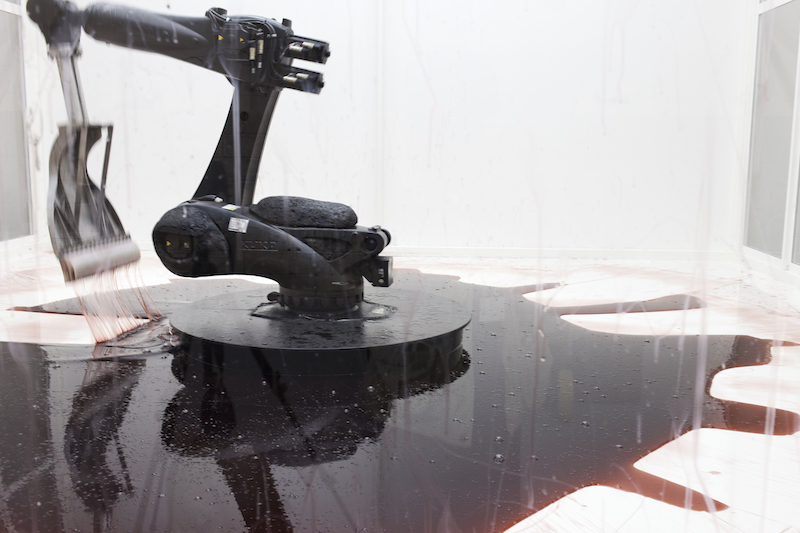
Sun Yuan and Peng Yu: ‘Can’t Help Myself’, 2016, 58th International Art Exhibition – La Biennale di Venezia, ‘May You Live In Interesting Times’ // Photo by Francesco Galli, courtesy of La Biennale di Venezia
On a conceptual level, the exhibition does not fall into the temptation of writing the umpteenth chapter on the Anthropocene saga, an overused topic in the art world that today runs the risk, like all topics reduced to fads, of not being taken seriously anymore. Neither Anthropocene, nor migrations, nor gender, nor dictatorship, none of these arguments prevails over the other, although they are all present, witnessing the contingencies of our age. They democratically converse with other universal, eternal but never anachronistic issues, such as ontological and aesthetic reflections. Liu Wei’s huge installation ‘Microworld’ stands as a symbol of the greatness of modernist stage sets: geometric and curved forms of highly-polished aluminum plates, a glossy version of the molecules, recall something of the ungraspable sensuality of the micro-universe. Similarly, Carol Bove’s sculptures play with the substance of the materials: steel forms, painted in a candy-colored palette, act like malleable materials which turn and twist and tickle a “kinesthetic” understanding. The audacity to show the aesthetic and aestheticizing value of art is a positive quality of this show.
Overall, the exhibition layout is appreciable in its simplicity. It was likely a painful, although intrepid, choice to sacrifice the magnificence (and magnitude) of the Arsenale spaces, inserting MDF panels to make the path more fluid. The result was perhaps not beautiful, but functional. No horror vacui, no overabundance, no redundance. ‘May You Live In Interesting Times’ presents a simplification that is not the “over-simplification” of which the President speaks in the press release, leading to a minimized critical reasoning. On the contrary, it is a tidiness that invites you to make a choice and focus on what really matters.
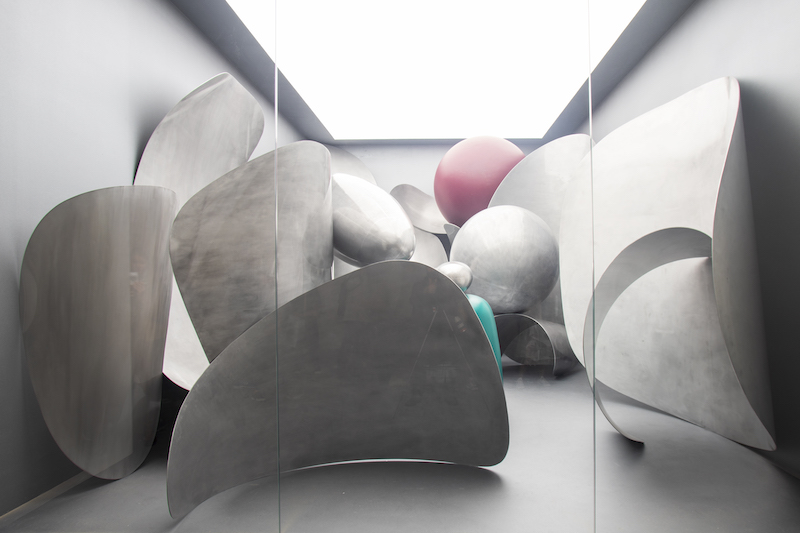
Liu Wei: ‘Microworld’, 2018, 58th International Art Exhibition – La Biennale di Venezia, ‘May You Live In Interesting Times’ // Photo by Italo Rondinella, courtesy of La Biennale di Venezia
Exhibition Info
LA BIENNALE DI VENEZIA
Group Show: ‘May You Live in Interesting Times’
Exhibition: May 11 – Nov. 24, 2019
Arsenale, 30122 Venice, Italy, click here for map
Giardini della Biennale, Calle Giazzo, 30122 Venice, Italy, click here for map






















